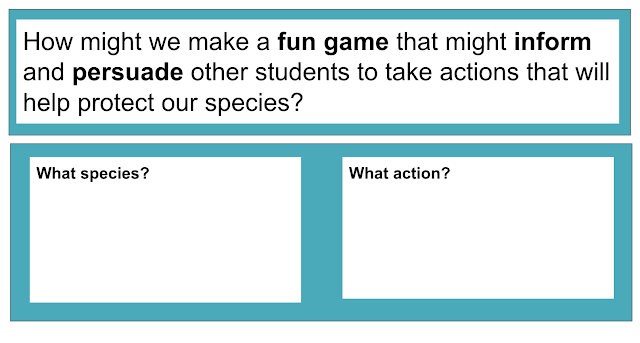Today's world is filled with rich media --media that is being used to communicate, entertain, and persuade. It makes sense that we would use it to teach children. In my French speaking home, we certainly learned to speak English from the media that we watched on our television or the radio shows we listened to.
I remember that our our high school had a full time audio visual department that rolled video cassette recorders, film strip projectors, and slide projectors with tape recorders into classrooms as instructional tools to help our teachers convey complex ideas.
But probably the assignment that had the most impact on me in high school was the project we did creating our own multi-media slideshow in our Humanities class. I remember taking photos from books using a copy stand and having those converted to REAL slides that projected on the classroom wall in sync with the tape recorder playing the song "Bus Rider" by The Guess Who.
Considering that this was in 1973, I would certainly describe my humanities teachers, Noel Ford and Maggie Griffith, as risk takers and early adopters of educational technology and innovative teaching practices. As a matter of fact, they are probably the reason I became a teacher. And it was not because of the technology they used, but because they made me think deeply about everything. I still refer to that class as my awakening as a learner.
More than 50 years later, I am still a strong advocate of making media as a way to engage and empower students. The tools we have to do this with no longer require a special AV room or special staff to roll them into our classroom. Today's tools allow us to design instruction using UDL strategies that allow students multiple modes of expression. They allow us to provide instructional materials using multiple modes of representation, and they allow teachers to include multiple modes of engagement.
Today's tools allow us to design instruction using UDL strategies that allow students multiple modes of expression. They allow us to provide instructional materials using multiple modes of representation, and they allow teachers to include multiple modes of engagement.
Using today's technology, a teacher can create multiple modes of representation by recording a podcast episode or making a movie that more clearly conveys a complex idea. They can combine the audio and video with text into an interactive e-book that students can access at school, at home, or even while riding the bus home.
But even more exciting is that students, also, can also make media to create multiple modes of expression as they publish their own podcast, create their own movies, or author their own ebooks using tools that they carry in their pocket.
And when you combine Universal Design for Learning with Project Based Learning design elements the possibilities for multiple modes of engagement expand even more.
Media Making tools can provide student choice of several different public products to express their voice. Students can create public products like Podcast, Videos, or interactive e-Books for authentic audiences. They can collaborate as teams to dive into a sustained inquiry into a topic that interest them or a challenging problem or question. The collaborative nature of today's media making tools like WeVideo, Canva, or Book Creator allow students to critique and revise their projects to create what
Ron Berger calls Beautiful Works.
Learn more about how this second grade classroom worked with Ron Berger and Steve Seidel to achieve deeper learning goals and meet state standards while creating beautiful works in the form of a music video and interactive ebooks
Berger: When I say “beautiful work,” people think aesthetically beautiful work. But I also think scientifically beautiful work, mathematically beautiful work—it can be in any field. Sometimes beautiful work is acts of courage and kindness and contribution to the world. Civic action can be beautiful work, artistic expression can be beautiful work, scientific ideas can be beautiful work.
I'm excited for my latest collaboration with
Vermont Rural Education Council where educators can gain the creative confidence they need to make media by producing podcast, make movies with green screen and other special effects, and publish interactive e-books and apply their new skills to the design of instructions that uses Universal Design for Learning strategies and design elements for Project Based Learning.

.png)















